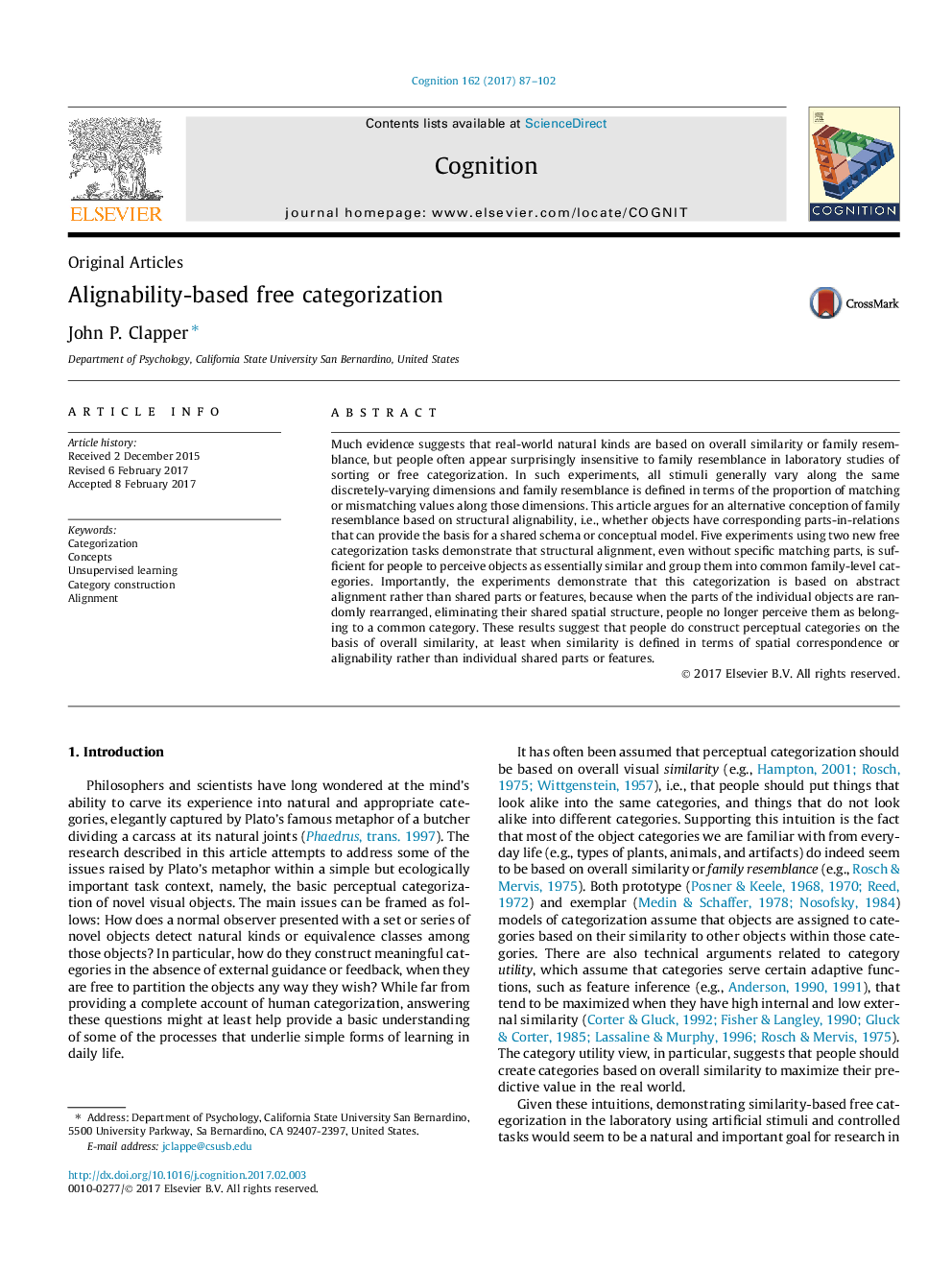| کد مقاله | کد نشریه | سال انتشار | مقاله انگلیسی | نسخه تمام متن |
|---|---|---|---|---|
| 5041663 | 1474105 | 2017 | 16 صفحه PDF | دانلود رایگان |
Much evidence suggests that real-world natural kinds are based on overall similarity or family resemblance, but people often appear surprisingly insensitive to family resemblance in laboratory studies of sorting or free categorization. In such experiments, all stimuli generally vary along the same discretely-varying dimensions and family resemblance is defined in terms of the proportion of matching or mismatching values along those dimensions. This article argues for an alternative conception of family resemblance based on structural alignability, i.e., whether objects have corresponding parts-in-relations that can provide the basis for a shared schema or conceptual model. Five experiments using two new free categorization tasks demonstrate that structural alignment, even without specific matching parts, is sufficient for people to perceive objects as essentially similar and group them into common family-level categories. Importantly, the experiments demonstrate that this categorization is based on abstract alignment rather than shared parts or features, because when the parts of the individual objects are randomly rearranged, eliminating their shared spatial structure, people no longer perceive them as belonging to a common category. These results suggest that people do construct perceptual categories on the basis of overall similarity, at least when similarity is defined in terms of spatial correspondence or alignability rather than individual shared parts or features.
Journal: Cognition - Volume 162, May 2017, Pages 87-102
